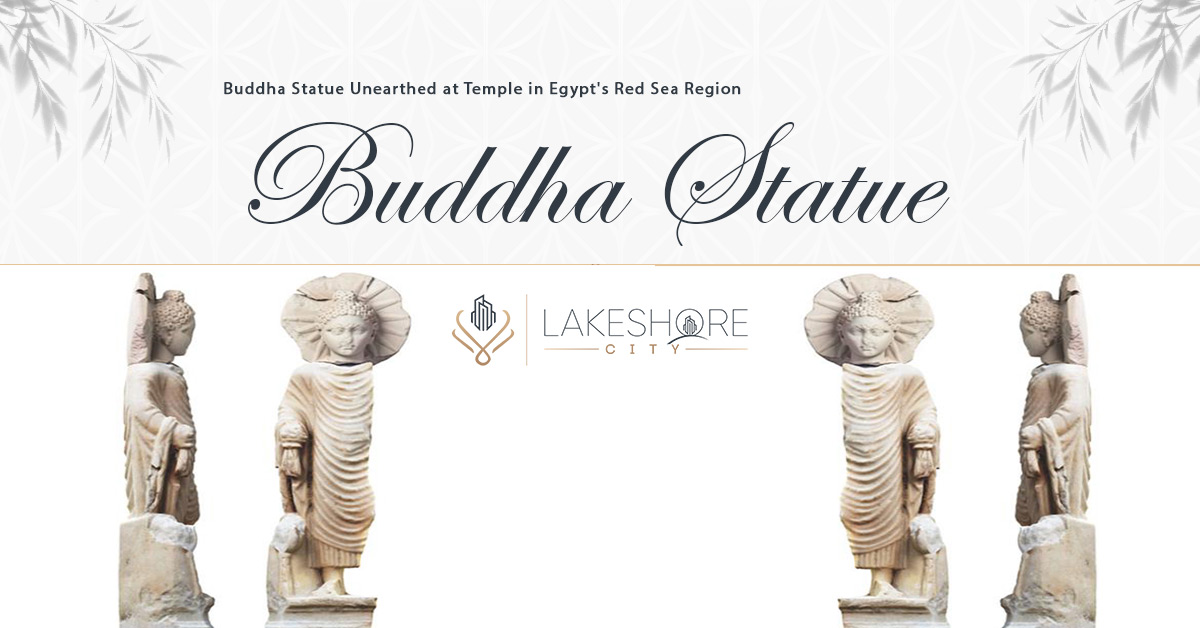A marble Buddha Statue, recently unearthed in a temple in Berenike on the red sea, provides evidence of trade between Egypt and India during the Roman Empire.
In the forecourt of the major early Roman era temple (dedicated to the Goddess Isis) in Berenike, a marble figure of the Buddha was discovered by the American-Polish archaeological mission.
The recently unearthed statue offers compelling evidence of trade between Egypt and India throughout the Roman Empire, according to Mostafa Waziry, Secretary General of the Supreme Council of Antiquities.
He continued by saying that Egypt played a pivotal role in a network of commercial routes that linked the Roman Empire to many ancient regions, including India.
Waziri also mentioned many Roman-era harbours on Egypt’s Red Sea coast, the most significant being Berenike, which was used for trade.
Pepper, semiprecious stones, linens, and ivory were among the goods he said were unloaded from Indian ships at Berenike.
Waziri claims that the things were loaded onto camels and transported over the desert to the Nile.
After arriving in Alexandria, the goods were distributed around the Roman Empire by other ships.
The Polish director of the mission, Mariusz Gwiazda, noted that the 71-centimeter-tall statue shows a standing Buddha with a garment in his left hand. He elaborated that the Buddha has a lotus blossom at his feet and a halo of sunrays above his head, both of which represent his enlightened state of mind.
Gwiazda said the statue was well crafted and that it was the nicest piece of Buddhist artifact ever discovered in Egypt.
“The Buddha statue was made from stone probably quarried from the region just south of modern Istanbul (Turkey) and it must have been sculpted locally at Berenike and dedicated to the temple by one or more rich merchants from India,” he explained.
In addition to the statue, archaeologists also discovered a Sanskrit inscription from the reign of Roman Emperor Philip the Arab (244-249 CE), according to Steven Sidebotham, the mission’s American director.
He also noted that the statue of the Buddha is from a considerably earlier time period than the inscription on it.
According to Sidebotham, further inscriptions were discovered by archaeologists in the same temple. He claimed that the Greek inscriptions dated from the first century CE to 305 CE. Inside the temple, Sidebotham claims, they discovered two coins from the central Indian Kingdom of the Satavahanas, which date to the second century CE.
Our Featured Article:
Read More: Buddhist Teachings Insights Into Achieving Sustainable Future
Don’t miss the chance to invest with Lakeshore! Secure your investment today by investing your financial investment with Lakeshore in the following available options like Lakeshore City, Lakeshore Club, and Lakeshore Farms.
For More updates, please Contact +92 335 7775253 or visit our website https://lakeshorecity.com/
Lakeshore City is the upcoming elite lifestyle at Khanpur Dam. Offering no parallel amenities for the members and owners of distinguished farmhouses.
Become Part of Luxurious Lifestyle
Contact: 0335 7775253



